Last year I shared photos from one of the parks in Toronto once a month to show my readers what our landscape looks like throughout the year. This is an update to two trees in that series that were badly damaged in a winter storm in early 2020.
Click on February, March, April, May, June, July, August, September, October, November, and December, and January to read the earlier posts and see what the park is like throughout the year.
Welcome back to this photo essay series! This post will be shorter than previous instalments in it since I’m only focusing on the two damaged trees that some readers requested an update on after the winter of 2020-2021 ended.

Let’s begin with the tree that lost a third of its leaves in that storm last year.
Look at how nearly all of its branches continue to bend down. You rarely see anything like that here.
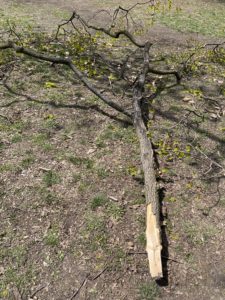
A week or two ago, I noticed a branch that was taller than me lying on the ground next to it. I suspect that it fell off during a recent storm due to the lack of cut marks on it and the way the bark was peeled off, but I can’t say for certain.
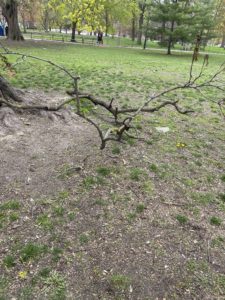
On a more recent visit, I saw this. I thought it was the same branch but also couldn’t confirm it.
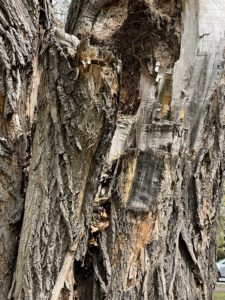
The trunk looks like it’s beginning to split open, and something appears to be growing inside of it. Maybe it’s mould or a fungus of some sort?
I worry about the survival of this tree as well as the possibility of someone getting hurt if a large branch falls on them while they’re standing near it.
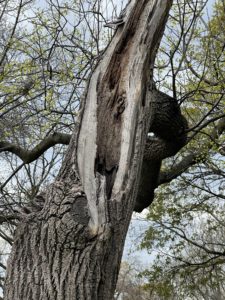
In happier news, the tree that originally lost half of its branches and a good chunk of its trunk is not showing any signs of mould (or whatever that stringy stuff was) growing in it. The wound on its drunk appears to be dry. There are no deep cracks in the wood, and all of it’s branches are as straight as the branches on healthy trees nearby. 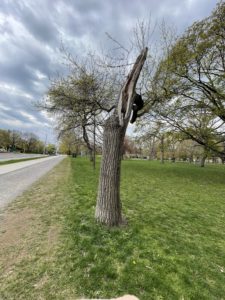
And to think I originally assumed this tree had been killed in that storm! Nature is full of surprises.
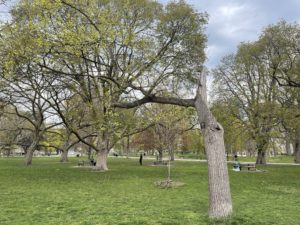
May it stick around for many years to come.
I’ll continue to keep an eye on these trees and will provide another update in this series if either one of them experiences a dramatic change in health for the better or the worse. My hope is that any future update in this series will only contain good news, but we’ll have to see what happens.
If you’ve ever seen trees in your area go through similar injuries, I’d love to hear about your experiences there.
My reduction in blogging time will continue on for now. As much as I miss interacting with all of you more often, I’m enjoying the quieter schedule and using that writing time to focus on my speculative fiction.

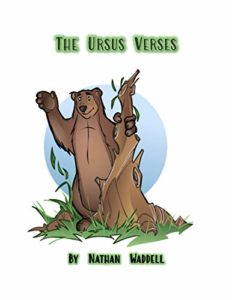 Title: The Ursus Versus
Title: The Ursus Versus The Lady in Red
The Lady in Red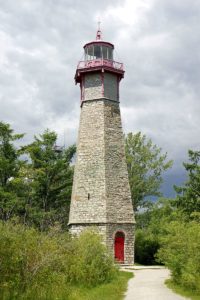
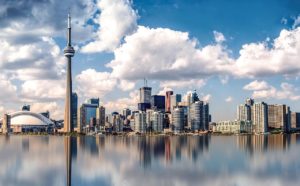 There are a few things about Canadian and, more specifically, Torontonian culture that I should explain here for anyone who isn’t already familiar with them before diving into the meat of this post.
There are a few things about Canadian and, more specifically, Torontonian culture that I should explain here for anyone who isn’t already familiar with them before diving into the meat of this post.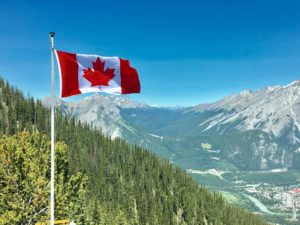 I remember a Canada Day spent on a rooftop party hosted by a friend of a friend. The view was spectacular.
I remember a Canada Day spent on a rooftop party hosted by a friend of a friend. The view was spectacular.


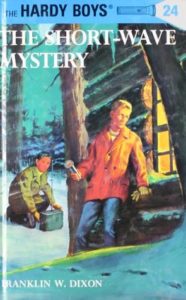
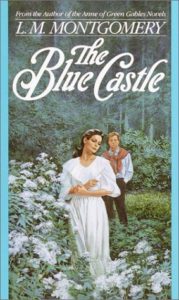
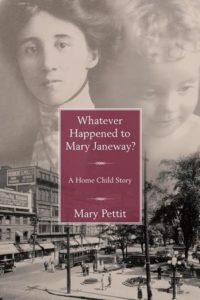
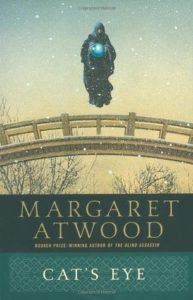
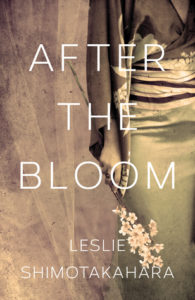
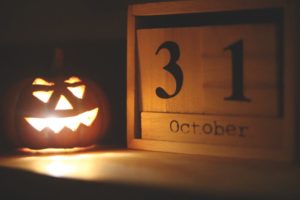 Occasionally, I wander away from the usual topics on this site to share personal stories from my life. Today is one of those days.
Occasionally, I wander away from the usual topics on this site to share personal stories from my life. Today is one of those days.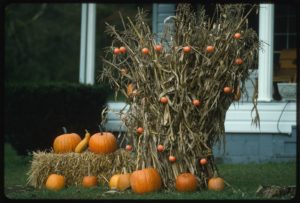 When I was about seven, my family was surprised by Halloween. A few neighbourhood kids knocked on our door to say trick-or-treat one night. We had nothing sweet to give them at first until my dad remembered his small stash of
When I was about seven, my family was surprised by Halloween. A few neighbourhood kids knocked on our door to say trick-or-treat one night. We had nothing sweet to give them at first until my dad remembered his small stash of  My family started celebrating secular Halloween when I was eleven. By that time, we’d moved into a neighbourhood that was known for its generosity, so the streets were packed with families from other areas as well as from our own.
My family started celebrating secular Halloween when I was eleven. By that time, we’d moved into a neighbourhood that was known for its generosity, so the streets were packed with families from other areas as well as from our own.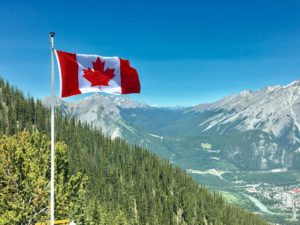 Happy Canada Day!
Happy Canada Day! I regularly read nonfiction books about history, but they’re generally not about the sorts of topics you’d learn in a formal class on this topic. Instead, I tend to be drawn to descriptions of things like the food or social customs of people who weren’t wealthy or famous. There’s something incredibly interesting to me about learning about what the daily lives of ordinary people were like a few or many generations ago
I regularly read nonfiction books about history, but they’re generally not about the sorts of topics you’d learn in a formal class on this topic. Instead, I tend to be drawn to descriptions of things like the food or social customs of people who weren’t wealthy or famous. There’s something incredibly interesting to me about learning about what the daily lives of ordinary people were like a few or many generations ago